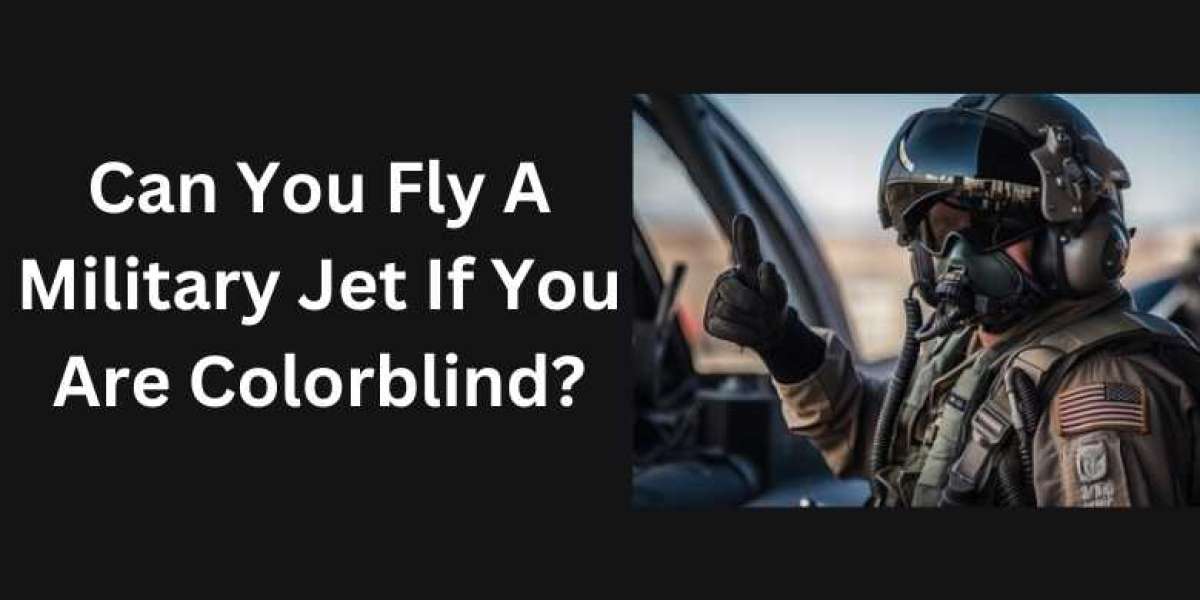The blunt answer to the question can you fly a military jet if you are colorblind is an outright no. The reason for this is that to successfully fly any jet at all, pilots are required to be able to identify colors. A prospective pilot will undergo a color perception test at the Aviation Medical Examiner (AME) for a medical certificate.
Color blindness means that you see colors differently as other people will see them. In certain cases, it makes you find it hard to distinguish between colors.
The AME gives you a color blindness test result. Having a failed test does not rule you out of flying. You are open to taking another test such as the test with the FAA to prove that your perception of color is different when you fly.
The FAA rules are quite strict and the test will determine if they will let you fly or who is not allowed to fly.
Though being color blind does not make you ineligible to join the U.S. Armed Forces, however, it will make you unqualified to fly a military jet. And the reasons are quite understandable.
If you are joining up, you have to take one or more color blindness tests at the Military Entrance Processing Station (MEPS). Your inability to differentiate red from green or even a vivid green from a vivid red will prevent you from undertaking military occupational specialties, of which flying a military jet is one of them.
Why Can’t You Fly With Colourblindness?
Well, the standard is placed so high because of safety reasons. Military jobs and flying a military jet (like the F22 Raptor) require your ability to distinguish one color from the other, especially flares and signal lights. This standard rule is not waived because of how important it is for safety in flying, landing, and other specific tasks like being aware of missiles.
In the United States, many applicants or recruits are looking to join up, and the military will not pick 1 color blind person out of 100 when there are 99 other suitably qualified candidates to fly a military jet. This is not discrimination but based on standard safety procedures. It is important for the safety of the pilot and other combatants on combat missions, and for the safety of the military jet itself.
Take, for example, you are on a combat mission and you are color blind and unable to spot your enemy, it could lead to your enemy gaining a significant advantage on you and you become helpless. Being fully color blind could also make you fire on friendlies. And as a fact, the military does not condone liabilities. Thus, you are better prevented from flying a jet than causing more casualties or turning the tide of war against your own country.
This is why the cockpit of military aircraft is reserved for recruits who have full-color spectrum perception because these people can tell green from red, and yellow from blue.
Can you be a military pilot with colorblindness?
The answer to this question is provided in detail above. The standard is high for those looking to fly as a military pilot. If you are partially color blind, you might be qualified to fly after going through some special testing. However, full-color blindness will disqualify you from becoming a military pilot.
It does not prevent you from joining the military as there are specialized job description in the military that does not require your color perception in great detail. The Army and some Marine Corps do not demand normal color vision tests. They only require you to possess the ability to differentiate between red from green.
If you’re colorblind, your best choice is to go ahead and apply for the specialization that interests you. If you fail one of the three tests, you may pass others and still be eligible.
Discuss all your concern with a recruiting officer if you are still in doubt if your color blindness affects you from joining the military. You are advised to still follow up and take the MEPS which will determine if you are qualified for a specific military slot you want to sign up for.
Failing a color vision test might not be the end of the road for you to becoming a pilot. You could opt to have a schedule of flying in the daytime, thus, you will not be able to fly at night. Being ineligible to fly in the military does not prevent you from pursuing your pilot dream in civilian aviation. However, you may be required to undertake some operational tests to determine your fitness. Sometimes, the rules are not as strict as military flying rules.
Airforce Colorblind Test
There are three color tests used by the Airforce to determine colorblindness. These are the Farnsworth Lantern (FALANT), the OPTEC 900 Color Vision Tester. And the Pseudoisochromatic Plate (PIP) set. Whichever of these tests is adopted to test your vision is at the discretion of the military. Therefore, you might only use one of the tests or undergo two or more of them. However, it is noted that the facility where the soldier goes physically for the test may determine the test used sometimes.
PIP test: In this testing, the applicant is shown a series of plate containing a large number made from colored dots on a background of dots that have a different color. All that is required of the subject is to identify the number that is displayed on each plate.
FALANT test: This test was developed to test the subject’s capability of distinguishing between green from red lights. The test is also conducted to check a rare inability to detect blue shades. A credible source states that the test was developed to test sailors’ ability to identify signal lights at sea.
OPTEC 900 Color Vision Tester is an updated version of the FALANT test and requires the subject to distinguish the colors of lights.
Is there a treatment for color blindness?
Hereditary color blindness does not have a cure. But people can find ways to adjust it. Color blindness does not cause serious problems most time.
If your color blindness is a result of another health issue, you are advised to see your doctor for treatment. Your doctor will be in a position to identify the problem and provide solutions. Some visual aids devices can help your color blindness such as glasses, contact lenses, and Applications on your mobile phones.
Color blindness does not prevent you from becoming a pilot but as the military standards are high for pilots who fly military jets, you will not be able to fly a military jet. There are different tests available to judge if you are color blind.
Those used by the Air Force have been highlighted above, and a brief explanation of what these tests entails was explained. Color blindness that runs in the family has no cure, but if your color blindness is due to a health issue, it is recommended that you visit your doctor to help you with visual aids as a means of correcting them. Doing this might assist you to become a pilot.
FAQS
Can individuals with colorblindness become military jet pilots?
Absolutely! While colorblindness may pose certain limitations, it doesn't automatically disqualify someone from becoming a military jet pilot. The military has specific protocols and assessments to determine an individual's suitability for flying, taking into account factors beyond color vision.
What are the requirements for color vision in military jet pilots?
While normal color vision is typically preferred, there are alternative color vision tests available for individuals with colorblindness. These tests assess an individual's ability to discern critical color-coded information, such as instrument panel displays or aircraft lights, ensuring their safety and effectiveness as pilots.
How does the military accommodate colorblind pilots?
The military employs various accommodations for colorblind pilots, such as using alternative color schemes, labeling instruments and controls with text or shapes, and implementing advanced technologies like color-filtering lenses. These measures enable colorblind individuals to effectively interpret visual information necessary for safe flight operations.
Are there specific limitations for colorblind military jet pilots?
Colorblindness may limit an individual's ability to perform certain tasks or pursue certain specialties within military aviation. For example, certain career paths or specific aircraft models may require excellent color vision. However, there are numerous roles and aircraft options available where colorblind pilots can excel and contribute to military aviation.
What steps should individuals with colorblindness take to become military jet pilots?
Individuals with colorblindness who aspire to become military jet pilots should begin by researching the specific requirements and accommodations offered by their desired military branch. They should consult with aviation medical professionals and undergo color vision testing to determine their eligibility. Additionally, seeking mentorship from current or former colorblind military pilots can provide valuable insights and guidance.
Conclusion
In conclusion, individuals with color blindness face significant limitations when it comes to flying military jets. The ability to distinguish between different colors is crucial for various aspects of aviation, including reading instrument panels, interpreting signals, and identifying potential threats.
Colorblindness can compromise the accuracy and safety of these tasks, posing a risk not only to the pilot but also to the overall mission and personnel.
While technological advancements and accommodations have been made to assist colorblind individuals in certain professions, the high-stakes nature of military aviation necessitates stringent standards for visual acuity, including color vision, to ensure the utmost safety and operational effectiveness.







